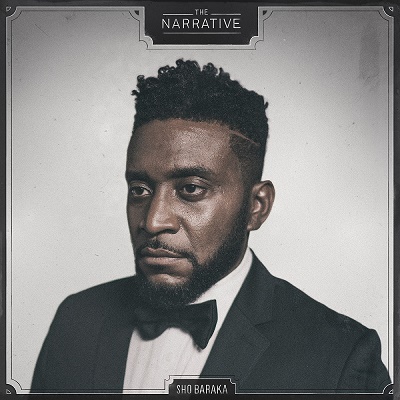
In the spring of 1852, Harriet Beecher Stowe published her seminal work, Uncle Tom’s Cabin(also called Life Among the Lowly).Uncle Tom’s Cabin was a towering, fictional tale, revolving around the life of “Uncle Tom,” that sought to affix a personal face onto the horrors of chattel slavery. The book became wildly popular, and has become widely credited with inspiring throngs of abolitionists to take up the cause of freedom.
While Stowe may have had noble ambitions, Uncle Tom’s Cabinteems with shortcomings. James Baldwin once called the novel a “very bad novel” full of “excessive and spurious emotion.”
Much of the criticism of the work flows from the idea that Stowe depicted her enslaved subjects in paternalistic, patronizing ways. Moreover, many chided the work, and its broad reception because many slaves voiced their lament themselves, documenting their cry for freedom in poetry, riveting public speeches, and a genre of memoir known as slave narratives.
One such work is Narrative of the Life of Frederick Douglass, An American Slave, published seven years prior to Stowe’s novel.
Narrative of the Life of Frederick Douglass was a moving account penned by Douglass himself that chronicles the demeaning time he spent as property of Captain Aaron Anthony, his bold escape to freedom, and his extraordinary life as one of the nation’s foremost abolitionists. In many ways, Douglass’ writings functioned as an authentic precursor to Uncle Tom’s Cabin. In essence, there would be no need for a novel likeUncle Tom’s Cabin if people heeded the writings of an actual slave narrative rather than an imagined one.
Narratives are powerful. They shape our perception of reality, and frame our means for processing the world we encounter.
Sho Baraka knows that, and has sought to yield the force of his narrative to change the narrative of “white supremacy and black nihilism.” One needs to look no further than cable news broadcasts, or scroll through various entertainment sites to see the communication of those problematic narratives. Sho knew he could offer a different story for his listeners. What came from those noble efforts is a terrific and timely album entitled The Narrative.
The Narrative is Sho Baraka’s Humble Beast debut, and his first full-length recording since his 2013 release of The Talented 10th. Sho says he joined Humble Beast because “Their brand is amazing … and because [he] trusted [Humble Beast’s leadership].” They teamed together to create a powerful piece of art.
The album addresses a host of topics ranging from the pain of loss, navigating racial prejudice and discrimination, the challenges of raising children with special needs, the desire to live a Christ-honoring life in a culture turned from the things of God, the need to affirm women in the faith, the quest for self-actualization while wrestling with divergent, competing interests, et cetera.
On The Narrative, Sho continues his recent tradition of giving his song titles layered meanings. OnTalented 10th, he gave each song a proper name (i.e. “Chapter 2: Michael”, “Chapter 6: Ali”, “Chapter 9: Jim Crow”, et cetera), each of which enhanced the understanding of the song’s concept.
On The Narrative, numbers follow the titles of each song. Again, the additional portions to the titles add meaning to their songs. Some of the songs’ accompanying numbers are obvious (i.e. “30&Up, 1986”); others require more digging. For example, “Forward, 1619” references the year the first ship carrying human cargo arrived in the United States, settling in Jamestown, VA.
Sho sees this as a key moment where “the narrative required changing.” Some of the numbers are autobiographical — “Fathers, 2004” (the year Sho’s first child was born), “Road to Humble, 1979” (the year Sho was born).
Others have meanings that seem to leap off the page (or from the speakers) upon further investigation. “Kanye, 2009” (2009 was the year Kanye stormed the stage to interrupt Taylor Swift at the MTV VMAs), “Soul, 1971” (1971 is a year where the sonic elements of the song fit seamlessly), and “Here, 2016” (2016 show what Lecrae and Sho are here for now), are all examples of this notion. In many ways, this feature showcases the depth of the album’s rich content.
Sho begins The Narrative like many novels, with a foreword.
“Foreword, 1619”, produced by theBeatbreaker, and featuring Adan Bean and C. L. Lacy is an apt introduction to the album. Over exquisite piano-laden instrumentation, Sho tells the listener, “Don’t close the book, I got more to write,” then talks about his divergent interests. On it, he raps how he is, “[F]rom the West somewhere between Cornel and Kanye,” he was raised somewhere between “Section 8 and Cloud 9.”
It is here, where you begin to learn much of the power of The Narrative. Sho can simultaneously synthesize influences from the brilliant Cornel West, and the bombastic Kanye West, yet still have genuine, sincere Christian faith that will ultimately guide and inform his art. It makes for a compelling blend.
From “Forward, 1619” The Narrative is filled with gems: the Jackie Hill Perry assisted “Kanye, 2009”; “Here, 2016” featuring Lecrae; the James Portier produced “Road to Humble, 1979”, which chronicles Sho’s evolution as an artist and announced his partnership with Humble Beast partnership, “Fathers, 2004”, the moving musings about fatherhood; Sho delving further into creating adult contemporary hip-hop with “30&Up, 1986”, and much more.
In speaking of his collaboration with Lecrae, Sho said, “I thought [‘Here, 2016’] was a microcosm of our friendship in a sense. When he says, ‘Like old time again homie’ there’s a reconnecting of us.
In many ways, The Narrative is about “changing the story,” because Sho has “more to write.” In discussing the notion of changing the narrative of “white supremacy and black nihilism”, Sho says:
“[O]ne of the things I wanted to do was storytelling, create a platform for identity formation. The thing about stories is that you can either tell good stories or you can tell bad stories. For so long, we have allowed bad stories to shape the African American experience and context. I believe it was my job to just assist in the correction of that narrative, to tell other stories, not just from a communal perspective, but a personal perspective.”
This type of genuine, paradigm-shifting storytelling pervades The Narrative. Indeed, it is one of its hallmarks. Sho attributes his ability to deftly communicate these stories to his increased maturity, which allowed him to grow “more patient with people who don’t understand where [he’s] coming from. [He’s] a lot more patient to those who do not share [his] sentiments on the issues of the world.”
Sho is more mature in presenting his unique perspective to the world, and it would appear as though his audience is more ready to receive it. In so doing, people have am actual narrative to inform their worldview rather than imagined ones.
Buy The Narrative on iTunes.
Source: www.rapzilla.com
STOP!!!Want To Promote Your Song?




